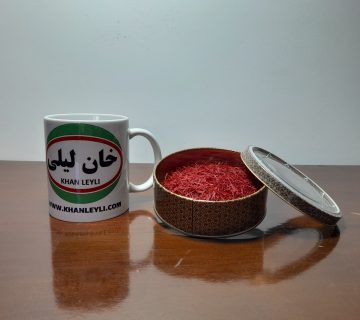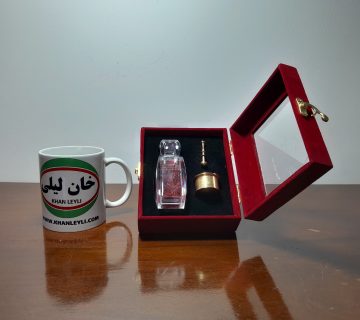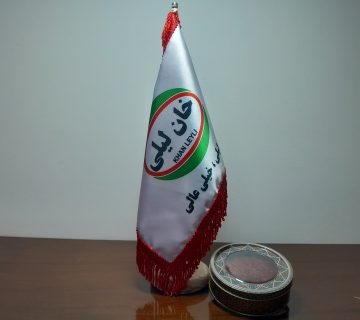Saffron, the vibrant spice derived from the Crocus sativus flower, has been cherished for centuries for its unique flavor, rich color, and potential health benefits. Across various regions of the world, saffron finds itself woven into the fabric of culinary, medicinal, and cultural practices. This essay explores the diverse uses of saffron in different parts of the globe, highlighting its multifaceted roles in enhancing cuisines, contributing to traditional medicine, and playing a vital role in cultural rituals.
- Culinary Delights in the Mediterranean:
In the sun-kissed regions of the Mediterranean, saffron takes center stage in culinary creations. From the paellas of Spain to the risottos of Italy, saffron’s aromatic threads infuse dishes with a distinctive taste and a golden hue. Its ability to add complexity and depth to savory and sweet delicacies makes it an indispensable ingredient in the kitchens of Mediterranean chefs. Saffron not only flavors the food but also adds a touch of luxury, transforming ordinary meals into extraordinary culinary experiences.
- Healing Threads in South Asia:
In the diverse landscapes of South Asia, saffron extends beyond the kitchen to become a staple in traditional medicine. Known for its anti-inflammatory and antioxidant properties, saffron is incorporated into herbal remedies and tonics. In countries like India, saffron-infused teas and elixirs are believed to have various health benefits, ranging from promoting digestion to enhancing mood. Its golden threads are woven into the tapestry of wellness, offering a holistic approach to health that has been passed down through generations.
- Rituals and Celebrations in the Middle East:
The Middle East reveres saffron not only for its culinary contributions but also for its symbolic importance in cultural rituals and celebrations. In countries like Iran, saffron is intricately tied to festivities, weddings, and religious ceremonies. Its use in special dishes during significant events reflects the spice’s association with joy, prosperity, and purity. Saffron-laden rice dishes and desserts become integral components of celebrations, symbolizing the richness of life and community.
- Artisanal Elixirs in North Africa:
North Africa embraces saffron as an artisanal elixir, enriching the region’s traditional beverages. Saffron-infused teas, coffees, and even tisanes are crafted to provide a sensory journey that goes beyond taste. These elixirs, often enjoyed in communal settings, create moments of connection and relaxation. Saffron’s aromatic threads become a conduit for shared experiences, fostering a sense of community and cultural identity.
- Eastern European Elegance:
In Eastern Europe, saffron graces both sweet and savory dishes, contributing to the region’s diverse culinary landscape. From saffron-infused soups in Hungary to delicately spiced pastries in Greece, the spice enhances the richness and complexity of traditional recipes. Its presence in festive dishes during holidays and special occasions reflects the spice’s role in elevating culinary experiences and connecting generations through shared flavors.
Golden Spice, Global Palette: Diverse Culinary Uses of Saffron Around the World
In the world of culinary artistry, few spices command the attention and admiration as saffron does. Derived from the delicate threads of the Crocus sativus flower, saffron is a golden spice that has woven itself into the global culinary fabric. This essay explores the diverse culinary uses of saffron around the world, delving into the ways different cultures have embraced this precious spice to elevate their cuisines, creating a symphony of flavors that transcends borders.
The Mediterranean Tapestry:
In the sun-drenched lands of the Mediterranean, saffron is a culinary maestro, lending its distinct flavor and vibrant color to iconic dishes. In Spain, saffron is an essential ingredient in the famed paella, infusing the rice with a golden hue and a depth of taste. Across the sea in Italy, saffron graces risottos, creating a luxurious and aromatic dish that captures the essence of the Italian culinary tradition.
South Asian Spice Symphony:
In the aromatic kitchens of South Asia, saffron takes on a central role in both sweet and savory dishes. In India, saffron is a key player in biryanis and kheer, imparting a regal touch to festive meals. In Iran, the saffron-infused rice dish known as Chelo is a staple, showcasing the spice’s ability to transform a simple grain into a culinary masterpiece. The diverse culinary uses of saffron in South Asia reflect its versatility and ability to harmonize with a myriad of flavors.
Middle Eastern Elegance:
The Middle East embraces saffron as an emblem of elegance, enriching its culinary creations with the spice’s distinctive taste. In Persian cuisine, saffron elevates dishes like Tahdig, a crispy rice delicacy, to a level of sophistication. The aromatic notes of saffron are also present in desserts like Baklava, adding a layer of complexity to the sweetness. Saffron’s golden threads become a signature of Middle Eastern culinary elegance.
Eastern European Intricacies:
Eastern Europe’s culinary landscape is adorned with the richness of saffron, enhancing both savory and sweet dishes. In Hungary, saffron-infused fish soups are a testament to the spice’s ability to balance and enhance flavors. Greek pastries, such as saffron-infused loukoumades, showcase the spice’s versatility in dessert preparations. Saffron’s use in Eastern European cuisines highlights its role as a versatile ingredient that transcends cultural boundaries.
North African Artistry:
North Africa celebrates saffron as an artisanal ingredient, infusing it into traditional beverages that captivate the senses. Saffron-infused teas, coffees, and tisanes create sensory experiences that go beyond taste, inviting individuals to savor moments of connection and relaxation. In the bustling markets of Morocco and Tunisia, saffron-laden dishes become a canvas of culinary artistry, reflecting the spice’s role in elevating the dining experience.
The diverse culinary uses of saffron around the world form a global palette that paints a vivid picture of the spice’s versatility and cultural significance. From the iconic dishes of the Mediterranean to the intricate recipes of South Asia, saffron’s golden threads have found a place in the hearts and kitchens of people across the globe. As a symbol of culinary artistry, saffron continues to transcend borders, uniting cultures through a shared appreciation for the golden spice that graces tables with its regal presence. In the symphony of global flavors, saffron stands as a golden note, adding richness, depth, and a touch of elegance to cuisines around the world.
Saffron’s Healing Threads: Medicinal and Cultural Uses Across Continents
Beyond its culinary allure, saffron, with its vibrant threads extracted from the Crocus sativus flower, possesses a rich tapestry of healing properties and cultural significance. This essay explores the medicinal and cultural uses of saffron across continents, revealing the spice’s therapeutic potential and its integral role in various traditional practices that transcend geographical boundaries
In the ancient traditions of South Asia, saffron is revered not only for its culinary contributions but also for its medicinal marvels. Known for its anti-inflammatory and antioxidant properties, saffron is incorporated into herbal remedies and tonics. In Ayurvedic medicine, saffron is believed to have mood-enhancing effects and is used to alleviate stress and anxiety. The golden threads of saffron, when brewed into teas or infused in warm milk, become elixirs that offer both comfort and healing.
The Middle East, particularly in Persian culture, has long considered saffron a panacea for various ailments. Saffron-infused beverages, such as Kahwa in Arab traditions, are believed to have digestive benefits and are often consumed to ease indigestion. In traditional Iranian medicine, saffron is recommended for its potential to enhance memory and cognitive function. The cultural integration of saffron in healing practices reflects its esteemed status as more than a spice – a revered medicinal ally.
In the sun-soaked regions of the Mediterranean, saffron extends its healing touch beyond the kitchen. Saffron-infused teas, often paired with herbs and honey, are consumed for their potential calming and digestive benefits. The aromatic elixirs, embraced in cultures such as Greek and Spanish, create moments of relaxation and well-being. The Mediterranean’s appreciation for saffron as a wellness companion demonstrates the spice’s ability to nurture both body and spirit.
In North Africa, saffron threads are woven into the fabric of cultural rituals and ceremonies. Saffron is incorporated into traditional tinctures and potions believed to promote vitality and ward off ailments. The spice’s inclusion in celebratory dishes during weddings and religious festivities reflects its symbolic importance, representing purity and prosperity. Saffron’s cultural presence in North Africa extends beyond the medicinal realm, becoming an integral part of communal traditions.
In certain European cultures, saffron is valued for its potential to enhance overall well-being. In Spain, saffron is infused into herbal teas to create aromatic blends that are enjoyed for both taste and health benefits. The European tradition of using saffron in wellness-focused infusions reflects a holistic approach to health, where the spice becomes a sensory journey of relaxation and rejuvenation.
Saffron’s healing threads, spanning continents and cultures, weave a narrative of both medicinal marvels and cultural significance. From South Asia’s Ayurvedic remedies to the Mediterranean’s elixirs of relaxation, saffron transcends its culinary role to become a symbol of holistic wellness. The golden threads of saffron, cherished for their potential to heal and nurture, underscore the spice’s timeless relevance as a revered ally in both traditional medicine and cultural practices across the diverse landscapes of our interconnected world.
Beyond the Kitchen: Saffron’s Multifaceted Uses in Traditional Practices and Rituals
Saffron, with its vibrant threads extracted from the Crocus sativus flower, is more than just a culinary treasure. Across cultures and continents, saffron has woven itself into the fabric of traditional practices and rituals, becoming a symbol of cultural heritage and spiritual significance. This article explores the multifaceted uses of saffron beyond the kitchen, delving into its role in traditional practices and cultural rituals that transcend geographical boundaries.
In the Middle East, saffron is steeped in cultural symbolism, making it an integral part of various rituals and ceremonies. In Persian culture, saffron is associated with purity, prosperity, and the sun. The spice finds its way into ceremonies, from weddings to New Year celebrations, symbolizing auspicious beginnings and blessings. The rich, golden hue of saffron threads becomes a visual representation of cultural values and the interconnectedness of life’s milestones.
Across the diverse landscapes of South Asia, saffron holds profound spiritual significance. Saffron-colored robes, known as “kesar vastra,” are worn by ascetics and spiritual leaders in Hinduism. The color represents purity, renunciation, and the pursuit of higher knowledge. The use of saffron in these spiritual practices goes beyond the visual; it becomes a symbol of devotion and a conduit for spiritual transformation.
In European traditions, saffron has often been associated with royalty and nobility. The use of saffron-infused fabrics and dyes in medieval European courts reflected opulence and regality. The spice’s association with luxury and prestige extended to royal ceremonies, where saffron-laden garments symbolized wealth and the pursuit of excellence. Saffron’s role in European traditions highlights its historical significance as a symbol of status and grandeur.
In North African cultures, saffron adds a festive flourish to celebrations and special occasions. Saffron is often used in traditional clothing, embellishing garments worn during weddings, religious festivities, and communal gatherings. The incorporation of saffron into these celebratory practices not only adds vibrancy to attire but also serves as a cultural identifier, connecting individuals to their heritage and creating a sense of unity.
In Eastern Europe, saffron is a key player in various festivals and celebrations. Saffron-infused dishes, beverages, and crafts are woven into the fabric of cultural festivities, bringing communities together. The spice’s aromatic presence enhances the sensory experience of festivals, creating a harmonious blend of flavors, colors, and traditions. Saffron becomes a unifying element that bridges generations and fosters a sense of shared cultural identity.
Saffron’s multifaceted uses in traditional practices and rituals illuminate its versatility as more than a culinary ingredient. Whether symbolizing purity in the Middle East, embodying spirituality in South Asia, representing royalty in Europe, adding flair to celebrations in North Africa, or harmonizing festivals in Eastern Europe, saffron emerges as a cultural thread that weaves through diverse traditions. Beyond the kitchen, saffron becomes a cherished emblem of heritage, spirituality, and community, connecting individuals to the rich tapestry of their cultural roots.








No comment